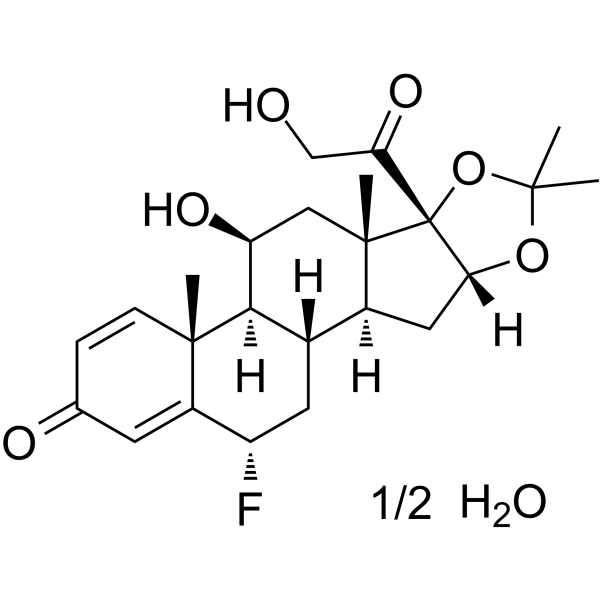| In Vitro |
Flunisolide hemihydrate (0.1-10 μM, 1 h) inhibits lung fibroblast (Isolated from lung) activation[1]. Flunisolide hemihydrate (10 μM, 24 h) reduces MMP-9, TIMP-1, TGF-β and fibronectin release by sputum cells (isolated frommild to moderate asthmatics), and induces sputum eosinophil apoptosis[2]. Flunisolide hemihydrate (0.1-10 µM μM, 24 h) effectively inhibits ICAM-1 expression and GM-CSF and IL-5 release induced by TNF-alpha in BEAS-2B cells[3]. Flunisolide hemihydrate (115 µM, 0-3 h) can be transported in a polarized way in the apical (ap) to basolateral (bl) direction in Calu-3 cells and is demonstrated to be ATP-dependent[4]. Apoptosis Analysis[2] Cell Line: Eosinophil Concentration: 10 μM Incubation Time: 24 h Result: Induced sputum eosinophil apoptosis.
|
| In Vivo |
Flunisolide hemihydrate (Intranasal administration, 0.3-10 µg/mouse, daily, from days 21–27) inhibits lung inflammation, fibrosis, and airway hyper-reactivity, also improves clearance of silica particles from the lungs in silicotic mice[1]. Flunisolide hemihydrate (Intranasal administration, 0.3-10 µg/mouse, daily, from days 21–27) inhibits silica-induced macrophage and myofibroblast accumulation in the lung tissue[1]. Animal Model: Male Swiss Webster mice (instilled, intranasally, with crystalline silica, 10 mg/50 µL, particle size 0.5-10 µm)[1] Dosage: 0.3-10 µg/mouse, daily, from days 21–27 Administration: Intranasal administration Result: Reduced both granulomatous response, collagen deposition, concerning granuloma formation caused by silica particles. Reduced the number of F4/80 and α-SMA positive cells.
|
